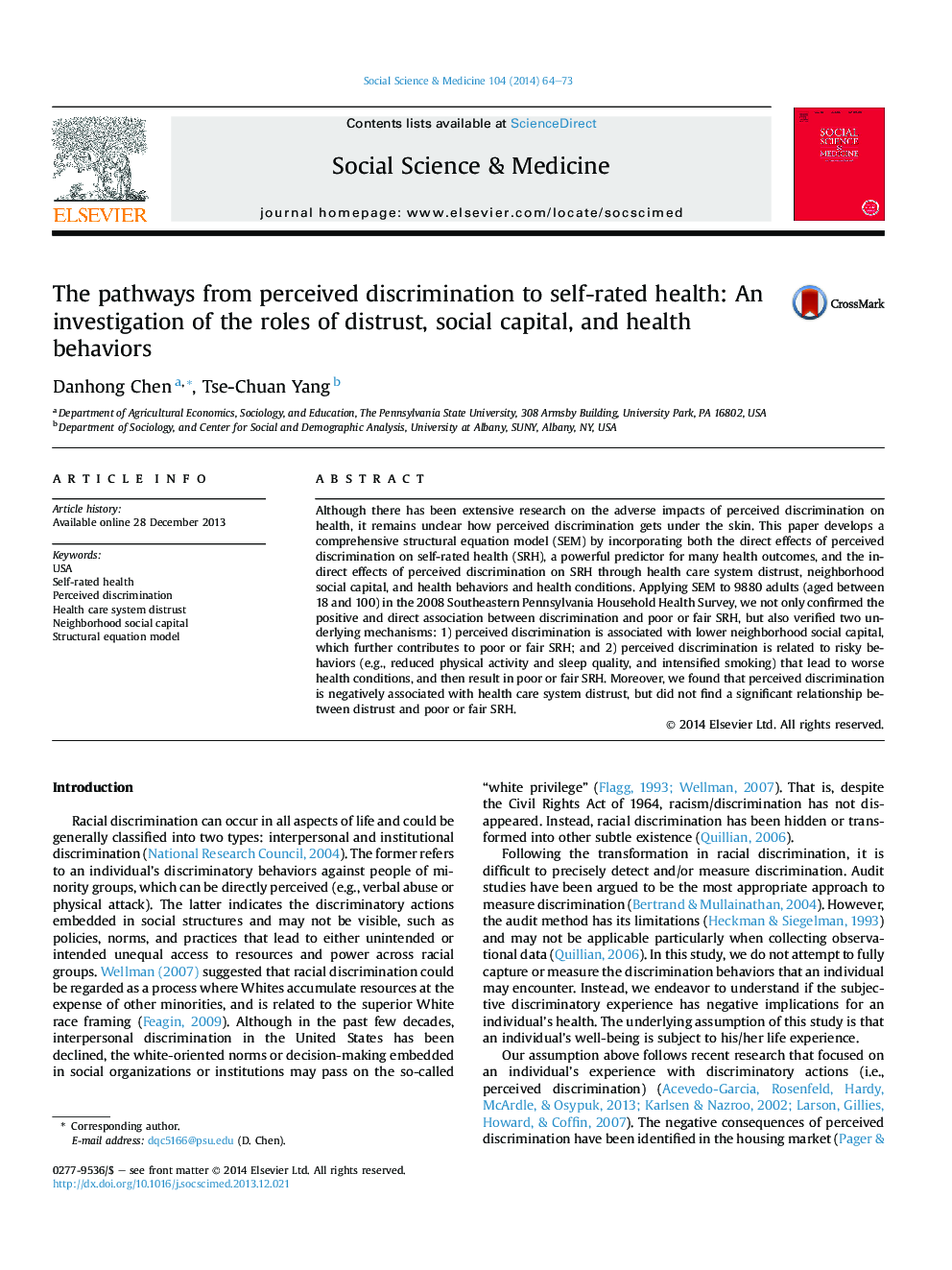| Article ID | Journal | Published Year | Pages | File Type |
|---|---|---|---|---|
| 7335771 | Social Science & Medicine | 2014 | 10 Pages |
Abstract
Although there has been extensive research on the adverse impacts of perceived discrimination on health, it remains unclear how perceived discrimination gets under the skin. This paper develops a comprehensive structural equation model (SEM) by incorporating both the direct effects of perceived discrimination on self-rated health (SRH), a powerful predictor for many health outcomes, and the indirect effects of perceived discrimination on SRH through health care system distrust, neighborhood social capital, and health behaviors and health conditions. Applying SEM to 9880 adults (aged between 18 and 100) in the 2008 Southeastern Pennsylvania Household Health Survey, we not only confirmed the positive and direct association between discrimination and poor or fair SRH, but also verified two underlying mechanisms: 1) perceived discrimination is associated with lower neighborhood social capital, which further contributes to poor or fair SRH; and 2) perceived discrimination is related to risky behaviors (e.g., reduced physical activity and sleep quality, and intensified smoking) that lead to worse health conditions, and then result in poor or fair SRH. Moreover, we found that perceived discrimination is negatively associated with health care system distrust, but did not find a significant relationship between distrust and poor or fair SRH.
Related Topics
Health Sciences
Medicine and Dentistry
Public Health and Health Policy
Authors
Danhong Chen, Tse-Chuan Yang,
